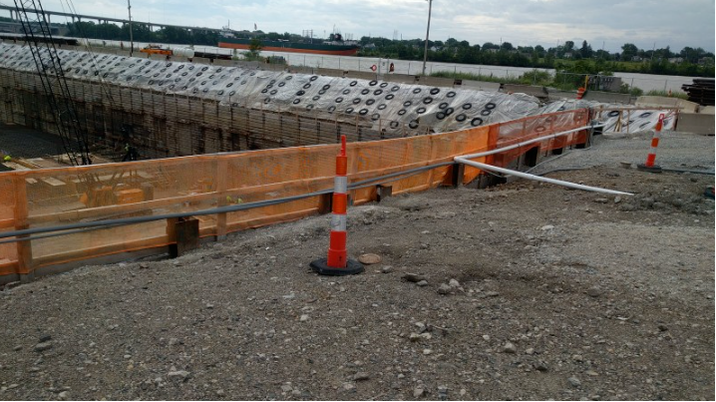Leading Consulting Civil Engineering Companies for Infrastructure Projects
Leading Consulting Civil Engineering Companies for Infrastructure Projects
Blog Article
Just How Consulting Engineers Enhance Geotechnical Design Projects: Insights Into Their Knowledge, Methods, and Collaborative Approaches
Consulting engineers are critical in boosting geotechnical design tasks, using their specialized expertise to browse the intricacies of subsurface conditions. Their methods encompass an array of website examination strategies, consisting of Standard Infiltration Tests (SPT) and Cone Infiltration Tests (CPT), which inform essential decisions throughout the layout and building stages. Furthermore, their joint methods foster interaction among diverse job stakeholders, inevitably shaping the job's trajectory. As we take a look at the multifaceted duties these professionals play, it ends up being clear that their contributions expand past technical knowledge, motivating a closer look at the ramifications for job success.
Duty of Consulting Engineers
The know-how of getting in touch with engineers in geotechnical design is essential to the successful execution of construction projects. These specialists play a pivotal duty in examining dirt and rock homes, which are critical elements affecting layout and construction decisions. By conducting complete site examinations, speaking with designers accumulate crucial data that informs the layout process, guaranteeing projects are developed on stable and appropriate ground.
Consulting designers additionally supply vital insights right into threat monitoring (geotechnical geologist). They determine possible geotechnical risks, such as landslides, dirt liquefaction, and settlement concerns, enabling stakeholders to implement effective mitigation strategies. Their experience help in maximizing foundation styles, which can cause considerable expense savings and enhanced safety and security
Moreover, seeking advice from designers act as an essential web link in between project owners, engineers, and professionals. Their ability to equate intricate geotechnical information into actionable suggestions promotes collaboration and facilitates informed decision-making throughout the project lifecycle. This multidisciplinary strategy not only improves task performance yet also makes certain conformity with regulative standards and finest practices.
Secret Methodologies in Geotechnical Engineering

One primary methodology is website investigation, which involves performing field tests and lab evaluations to gather information on subsurface conditions. Methods such as Standard Penetration Testing (SPT) and Cone Infiltration Screening (CPT) are commonly used to review dirt stratigraphy and toughness. Additionally, geophysical methods, including seismic and electrical resistivity surveys, give non-invasive methods to evaluate subsurface qualities.
An additional essential method is numerical modeling, which allows designers to mimic different situations and forecast just how soil-structure interactions will behave under different loading conditions. Limited Element Evaluation (FEA) is a common method utilized in this context.
Moreover, the style of structures, maintaining structures, and earthworks counts heavily on these approaches - geotechnical geologist. By integrating innovative logical tools with field information, speaking with designers can establish tailored options that address certain basics project difficulties, eventually adding to the stability and safety of building and construction jobs
Importance of Dirt Evaluation
Dirt analysis acts as a fundamental element in geotechnical design, learn the facts here now providing necessary insights right into the physical and chemical residential properties of soil needed for effective building preparation. Understanding soil characteristics is important for determining its load-bearing capacity, drain habits, and capacity for settlement or instability. In-depth dirt examinations, including sampling and lab screening, help determine parameters such as soil kind, dampness web content, density, and shear toughness.
These evaluations inform the selection of proper building techniques and materials, eventually influencing project safety and security and durability. Cohesive dirts may require various structure designs compared to granular dirts, demanding customized design services. Soil analysis help in identifying contaminants that might pose threats to human health or the atmosphere, enabling for the development of mitigation methods.
Incorporating soil evaluation right into the onset of job advancement helps to reduce unanticipated obstacles, ensuring that engineers can prepare for and resolve prospective problems before they rise. By developing a comprehensive understanding of the website conditions, consulting designers can optimize style effectiveness and minimize expenses, thereby boosting the total success of geotechnical engineering tasks.
Collaborative Approaches in Jobs
Successful geotechnical projects commonly pivot on joint approaches that combine varied knowledge from numerous self-controls. Reliable partnership among consulting designers, rock hounds, ecological researchers, and building professionals is vital for addressing complex difficulties and enhancing task end results. By leveraging the distinct skills and expertise of each staff member, tasks can take advantage of a holistic understanding of the site conditions, regulatory needs, and design constraints.
Regular communication and interdisciplinary conferences facilitate the sharing of insights and promote a society of team effort. These collaborative efforts make it possible for the recognition of possible risks early in the job lifecycle, enabling prompt mitigation approaches. Furthermore, incorporating responses from stakeholders, consisting of neighborhood neighborhoods their website and regulatory firms, makes sure that all point of views are thought about, improving task acceptance and conformity.
In addition, the combination of sophisticated modern technologies, such as Geographic Details Solution (GIS) and Structure Information Modeling (BIM), further enhances cooperation. These devices permit the real-time sharing of data and visualization of geotechnical conditions, promoting notified decision-making. Inevitably, a collective strategy not just improves project implementation yet additionally lays the foundation for innovative options to complicated geotechnical engineering obstacles.
Influence On Project Outcomes

Consulting engineers use sophisticated techniques such as risk assessment and anticipating modeling, which boost the precision of job forecasts. Their capacity to incorporate cutting-edge modern technologies, like geotechnical instrumentation and information analytics, even more refines the style and building processes. Because of this, tasks experience boosted performance, lowered expenses, and reduced delays.
Moreover, promoting efficient interaction and cooperation among staff member boosts analytic capabilities. When challenges emerge, a joined front allows for swift identification of remedies, avoiding prospective setbacks. Eventually, the collective efforts of speaking with engineers add to better outcomes, ensuring that projects fulfill both regulatory requirements and client assumptions.
Verdict

Report this page